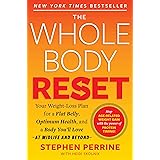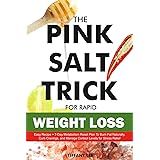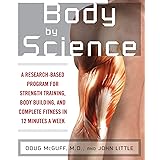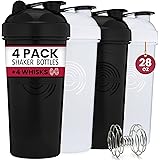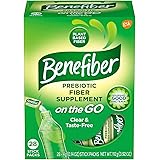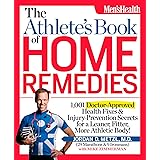Beyond the Screen: Practical Weight Loss Tips That Truly Deliver Sustainable Results
Imagine embarking on a weight loss journey, only to find yourself trapped in a cycle of restrictive diets, fleeting results, and the inevitable rebound. Many individuals experience this frustrating pattern, feeling like they are constantly fighting against their own bodies and cravings. The truth is, sustainable weight loss isn’t about deprivation; instead, it centers on cultivating a harmonious relationship with food and integrating healthy habits into your everyday life. The video above offers valuable insights into eight fundamental strategies that genuinely work, guiding you towards a healthier, more balanced existence. We will now expand upon these crucial concepts, offering deeper insights and actionable steps to empower your journey.
Embrace Your Cultural Roots for Sustainable Eating
One of the most profound weight loss tips, often overlooked in the rigid world of fad diets, is the importance of a cultural plan. Your dietary approach should never feel like a foreign concept, completely detached from the foods you grew up loving. If staples like rice, wheat, or lentils are integral to your heritage, attempting to eliminate them entirely creates an unsustainable plan that sets you up for failure. Our bodies are accustomed to the foods we’ve consumed for years, often generations.
Instead of drastic cuts, focus on mindful modifications. For instance, if rice is a staple, consider switching to brown rice or a blend of rice and quinoa, which offer more fiber and nutrients. If wheat bread is a daily occurrence, explore whole wheat varieties or even sourdough options. The goal is to transform your traditional dishes into healthier versions, rather than abandoning them altogether. This approach respects your palate and cultural identity, making healthy eating feel natural and enjoyable, not a chore.
The Power of Flexibility: Ditching Restriction for Lasting Change
Have you ever noticed that the moment you forbid a certain food, your cravings for it intensify tenfold? This phenomenon highlights a critical aspect of effective weight loss: getting rid of restriction. When diets are overly rigid, they often lead to feelings of deprivation, which can then trigger uncontrolled eating or binge episodes. The idea of completely cutting out “bad” foods often backfires, creating a psychological battle that is difficult to win long-term.
Rather than adopting an all-or-nothing mindset, embrace the 80/20 rule. This means eating nourishing, whole foods 80% of the time and allowing yourself favorite treats or less healthy options for the remaining 20%. Imagine if you could enjoy a slice of pizza or a scoop of ice cream occasionally without guilt, knowing it fits within your broader healthy eating strategy. This flexibility helps prevent feelings of deprivation, reduces the likelihood of binge eating, and fosters a more balanced and sustainable approach to food. It’s about moderation, not elimination.
Move More, Live Better: The Indispensable Role of Exercise
While nutrition is undeniably crucial, physical activity holds an equally important place in any effective weight loss strategy. The video correctly emphasizes that exercise is just as important as what you eat. The recommendation of 150 minutes of physical activity per week serves as an excellent benchmark for overall health and weight management. However, understanding the *types* of exercise and their benefits can significantly enhance your results.
This 150-minute recommendation typically refers to moderate-intensity aerobic activity, such as brisk walking, swimming, cycling, or dancing. Yet, incorporating strength training at least two to three times a week is also vital. Building muscle mass increases your resting metabolism, meaning your body burns more calories even when you’re at rest. Beyond just calorie burn, exercise improves cardiovascular health, boosts mood, reduces stress, and enhances sleep quality – all contributing factors to successful weight management. Furthermore, discovering activities you genuinely enjoy, whether it’s hiking, yoga, or team sports, transforms exercise from a chore into a fulfilling part of your lifestyle.
Fuel Your Body Right: The Unsung Heroes – Whole Grains and Fiber
When it comes to satiety and sustained energy, whole grains and foods rich in fiber are your best allies. The video advocates for choosing whole grains, and for good reason: they are nutritional powerhouses. Unlike refined grains, whole grains retain their bran, germ, and endosperm, packing in essential nutrients like B vitamins, iron, magnesium, and crucially, fiber. This fiber is what fills you up quickly and keeps you feeling fuller for longer, helping to curb overeating and unnecessary snacking.
Consider swapping white bread for whole wheat, white rice for brown rice or quinoa, and incorporating oats into your breakfast routine. Moreover, don’t limit your fiber intake to just grains. Load up on fruits, vegetables, legumes (beans, lentils), and nuts. Fiber not only aids in digestion and blood sugar regulation but also plays a role in heart health and cholesterol management. Imagine starting your day with a bowl of oatmeal topped with berries and nuts – a breakfast that keeps you energized and satisfied for hours, preventing those mid-morning hunger pangs.
Mastering Portion Control: Eating Smarter, Not Less
The old adage “Eat breakfast like a king, lunch like a prince, and dinner like a pauper” might sound cliché, but it contains a wealth of wisdom regarding portion control. Our bodies typically require more energy earlier in the day when we are most active, and less as we wind down for the evening. Effectively managing your portion sizes is a cornerstone of sustainable weight loss, ensuring you consume adequate nutrients without excess calories.
Beyond this classic advice, practical strategies for portion control include using smaller plates, which can visually trick your brain into thinking you have more food. Pay attention to hunger and fullness cues – eat slowly and mindfully until you are satisfied, not stuffed. Imagine using your hand as a guide: a serving of protein roughly the size of your palm, a serving of carbs like a cupped hand, and vegetables filling the rest of your plate. Understanding these visual cues helps you make smart choices without constantly measuring every morsel. This method fosters a more intuitive eating style, which is far more sustainable than strict calorie counting for most people.
The Unseen Pillar of Weight Loss: Quality Sleep
While often overlooked, the importance of good sleep for weight management cannot be overstated. The video’s simple directive to “sleep well, or you’ll end up craving larger meals” reveals a profound physiological truth. When you’re sleep-deprived, your body’s hormonal balance is thrown into disarray. Specifically, ghrelin, the hormone that stimulates appetite, increases, while leptin, the hormone that signals satiety, decreases. This imbalance leads to increased hunger and cravings, particularly for high-calorie, high-carbohydrate foods.
Moreover, poor sleep can elevate cortisol levels, a stress hormone that encourages fat storage, especially around the abdomen. Ensuring you get 7-9 hours of quality sleep each night is not merely about feeling rested; it’s a strategic move for your metabolism and appetite regulation. Imagine waking up feeling truly refreshed, less prone to those intense sugar cravings that often plague sleep-deprived individuals. Prioritize your sleep environment, establish a consistent bedtime routine, and disconnect from screens before bed to optimize this crucial aspect of your healthy lifestyle.
Cook Your Way to Health: Savory Methods, Smart Choices
How you prepare your food is just as significant as the ingredients themselves. The video wisely advises using healthy cooking methods such as grilling, boiling, and steaming, while explicitly warning against frying. Each cooking technique impacts the nutritional profile and calorie count of your meals, making this one of the most actionable weight loss tips.
Grilling allows fats to drip away, steaming preserves nutrients without added oils, and boiling is an excellent way to cook vegetables and lean proteins. In contrast, deep frying infuses food with excessive amounts of unhealthy fats, dramatically increasing calorie density and often compromising the nutritional integrity of the ingredients. Consider experimenting with baking, roasting, or air frying as well, which offer similar benefits to grilling with varied textures and flavors. Imagine transforming your favorite dishes into healthier versions simply by changing the cooking method – a grilled chicken breast with roasted vegetables rather than fried chicken and fries, delivering flavor without the caloric overload. This simple shift can make a monumental difference in your overall calorie and fat intake.
Plate a Rainbow: Unlocking Micronutrient Power with MyPlate
Eating from different food groups – grains, proteins, vegetables, fruit, and dairy – ensures you receive a comprehensive range of micronutrients essential for bodily function and weight management. The suggestion to “rainbow on a plate” isn’t just aesthetic; it’s a powerful nutritional strategy. Each color in fruits and vegetables often signifies different vitamins, minerals, and antioxidants. For example, red foods like tomatoes offer lycopene, while leafy greens provide folate and Vitamin K.
To truly get portion sizes right and ensure a balanced intake, the USDA Center’s MyPlate method is an invaluable tool. MyPlate illustrates how to build a healthy meal, recommending filling half your plate with fruits and vegetables, and the other half with grains and protein, accompanied by a serving of dairy. Imagine crafting a meal where vibrant broccoli and sweet potatoes take up half your plate, alongside a lean piece of salmon and a small portion of quinoa, perhaps with a glass of milk. This visual guide simplifies meal planning, making it easy to ensure you’re getting the diverse nutrients your body needs to thrive, support metabolism, and ultimately, achieve sustainable weight loss.



